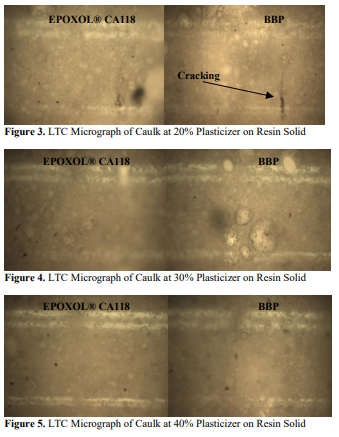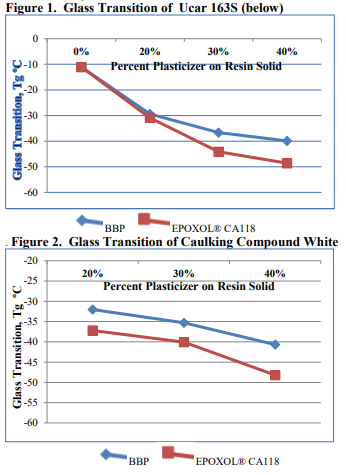Knowde Enhanced TDS
Identification & Functionality
- CASE Ingredients Functions
- Technologies
- Product Families
Features & Benefits
- Labeling Claims
- CASE Ingredients Features
Applications & Uses
- Applications
- Compatible Substrates & Surfaces
- Usage Recommendations
- EPOXOL® CA118™ can be used as drop-in replacement of commonly used alcohol esters, glycol ethers, and low VOC coalescing agents on a lb-lb basis with equal or better coalescing performance.
- Reduction of usage levels may improve some desired properties such as scrub and block resistance.
- Customers should use a ladder trial to determine the optimum level of ACS CA118™ to be used in any formulations where a coalescent or plasticizer isreplaced.
Properties
- Color
- Physical Form
- Appearance
- Clear liquid
- Physical Properties
| Value | Units | Test Method / Conditions | |
| Viscosity (25°C) | 20 | cps | ASTM D2196-10 |
| Moisture | max. 0.15 | % | ASTM E1064 |
| Active Matter | min. 99.5 | % | Calculated |
| Density (25°C) | 7.965 - 7.975 | lbs./US gal | ASTM D4052 |
| Pour Point | 6 - 9 | °C | ASTM D6749 |
| Cloud Point | 6 | °C | ASTM D5773 |
| Flash Point | min. 190 | °C | ASTM D93 |
| Boiling Point (0.4 torr) | 147 | °C | ADM INTERNAL |
| Bio-based material content | 95 | % | D-6866-12/Method B |
| Refractive Index (25°C) | 1.453 | — | ADM INTERNAL |
| VOC | 0 | % | ASTM D6886-14 |
Regulatory & Compliance
- Certifications & Compliance
- Inventory Information
Registry Status Country TSCA Listed United States
IECSC Listed China DSL Listed Canada EINECS Listed Europe ECL Listed Korea
Technical Details & Test Data
- Epoxol® CA118 PLASTICIZER Vs. Benzyl Butyl Phthalate
Introduction/Background
Epoxol® CA118 would be evaluated as a plasticizer versus Benzyl Butyl Phthalate2 (BBP) in a caulking compound formulation3 using acrylic latex4.
Conclusions
Epoxol® CA118 showed better plasticizing property than Benzyl Butyl Phthalate. Amount of Epoxol® CA118 could be reduced by about 35% to 50% to be comparable with BBP. To completely evaluate performance of Epoxol® CA118 in a caulking compound, the right mixing equipment should be used in preparing the samples, and various testing procedures based on ASTM standards should be performed.
Results and Discussion
Epoxol® CA118 showed better plasticizing property as shown by its low glass transition (Figure 1) than BBP at standard dosage of 40% as recommended on the caulk formulation3 . To be comparable with 40% BBP, it would need about 27% Epoxol® CA118 to achieve at least similar glass transition. Similarly, in a caulking compound formulation, as shown in Figure 3, it would need only about 30% Epoxol® CA118 to achieve a glass transition similar to BBP at 40%.
The film formation by low temperature coalescing (LTC) method at 20% plasticizer was complete for Epoxol® CA118 while BBP showed a small crack (Figure 3, as shown by arrow). BBP and Epoxol® CA118 were comparable at 30% and 40% (Figures 4 and 5).

Packaging & Availability
- Country Availability
- Regional Availability
Storage & Handling
- Storage and Handling
- Store in the original unopened container. If the container is opened use entire contents as soon as possible. Reseal container tightly.
- Product should be stored at temperatures between 10 and 50°C. Do not allow to freeze.
- Congealed product should be warmed completely to 20°C before use. Vent container while warming.
- Shelf life is a minimum of 36 months when stored as recommended in the original unopened container

